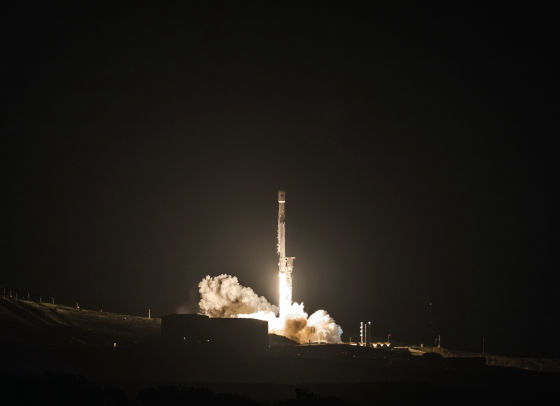SpaceX succeeded in the launch of the Internet satellite, the offshore catch of nose cone regrettably failed

SpaceX succeeded in launching two satellites for the Internet communication project "Starlink" using satellite on 22nd February 2018. In this launch, we are already applying rocket collection and reuse technology to satellite launch, and experiments are also being conducted to catch and collect expensive parts called fairing (nose cone) offshore.
Recycled SpaceX rocket boosts Paz radar satellite, first Starlink testbeds into orbit - Spaceflight Now
https://spaceflightnow.com/2018/02/22/recycled-spacex-rocket-boosts-paz-radar-satellite-first-starlink-testbeds-into-orbit/
SpaceX misses catching Falcon 9 rocket fairing with a giant net on a big ship | TechCrunch
https://techcrunch.com/2018/02/22/spacex-misses-catching-falcon-9-rocket-fairing-with-a-giant-net-on-a-big-ship/
SpaceX just launched two of its space internet satellites - the first of nearly 12,000 - The Verge
https://www.theverge.com/2018/2/15/17016208/spacex-falcon-9-launch-starlink-microsat-2a-2b-paz-watch-live
You can check how the satellite is launched with PAZmission from around 1 hour 44 minutes of the following live delivery movie.
WATCH LIVE: SpaceX to Launch Falcon 9 Rocket # PAZmission @ 9: 17am EST - YouTube
The Falcon 9 rocket is loaded with Spanish PAZ satellite and Starlink "Microsat-2a" "Microsat-2b" internet satellite.

Flacon 9 launched at 9:17 AM Pacific Standard Time succeeded in detaching PAZ satellite and Internet satellite safely in about 11 minutes from launch.

Payloads of satellites etc. are covered with a protective cover nose cone to protect against high heat during launch. The nose cone is an expensive part of 6 million dollars (about 640 million yen), which means that it accounts for 10% of the launch cost of Flacon 9.

Although the nose cone has been recovered by the launch so far, it was scooping with what was dropped on the ocean by the parachute with a ship. For this time, SpaceX tried to recover at least one of the nose cones falling using the parachute with a ship equipped with a huge net and collecting it before arriving landing.
Unfortunately, according to SpaceX's Eulon Mask CEO, he seems to have failed to catch the nose cone on board a few hundred meters. However, it seems to have grasped the response that catching can be done if the falling speed is further reduced with a larger parachute.
Missed by a few hundred meters, but fairing landed intact in water. Should be able catch it with slightly bigger chutes to slow down descent.
- Elon Musk (@ elonmusk)February 22, 2018
SpaceX is considered to gain huge revenue if Starlink can provide internet service anywhere in the world.The Wall Street JournalAccording to internal sources obtained by the company, SpaceX estimates that the annual revenue is 3 billion dollars (about 320 billion yen) by acquiring 40 million users in 2025. This revenue is expected to be utilized to achieve SpaceX's ultimate goal of "sending mankind to Mars."
Related Posts:
in Web Service, Hardware, Science, Video, Posted by darkhorse_log







